Overnight in Hotel de la Paix
Lucerne (also spelt as Luzern), is located in central Switzerland, at the northern end of Lake Lucerne. The Reuss River flows from the lake through the city. It’s a picturesque city surrounded by hills and mountains, including Mount Pilatus and Mount Rigi. We took a train from Interlaken to Lucerne (2 hours) and reached after 7pm. We checked into our hotel for which we paid a lot of money but was disappointed with the contents of the room. There was no bottled water or complimentary tea/coffee provided. Just a bare room with a bed.
Since there was enough daylight at 8pm in the evening, we decided to visit one of the popular sites in Lucerne, the Lion Monument, which was a 10min walk from our hotel.
- Löwendenkmal (Lion Monument)
- Church of St. Leodegar
- Kurplatz Lucerne
- Lucerne’s Old Town
- Kapellbrücke (Chapel Bridge)
- Jesuit Church
- Franziskanerkirche
- Spreuerbrücke
- Lucerne’s Old Town
- Lucerne’s town wall and towers
- Cruising on Lake Lucerne
- View of Lake Lucerne from Mt. Pilatus – Did not have time to do this
Löwendenkmal (Lion Monument) – also called the Line of Lucerne is a rock relief designed by Bertel Thorvaldsen and hewn in 1820–21 by Lukas Ahorn. The monument commemorates the death of 26 Swiss Guards in the French Revolution of 1792. American author Mark Twain praised the sculpture of a mortally wounded lion as “the most mournful and moving piece of stone in the world.”
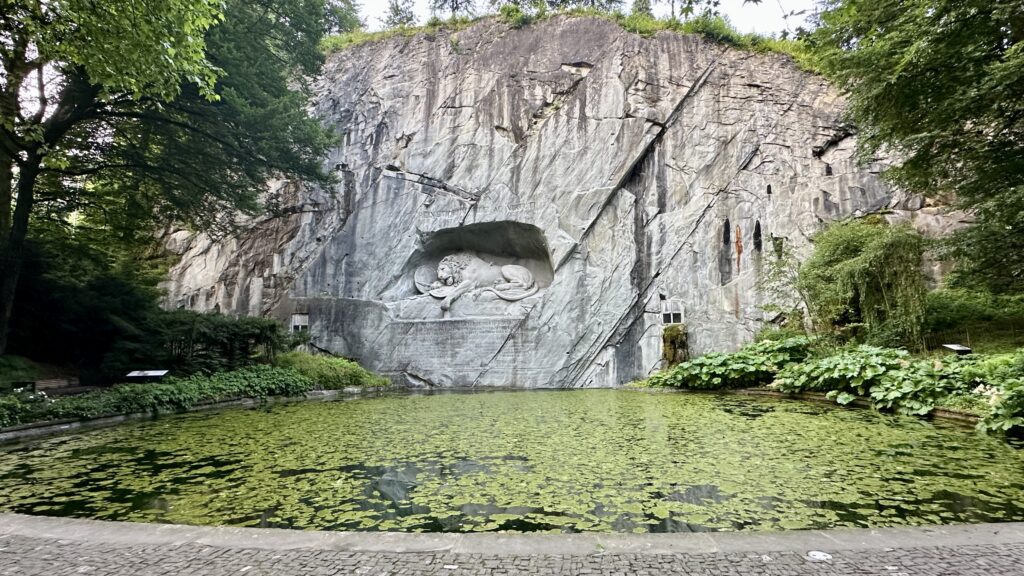
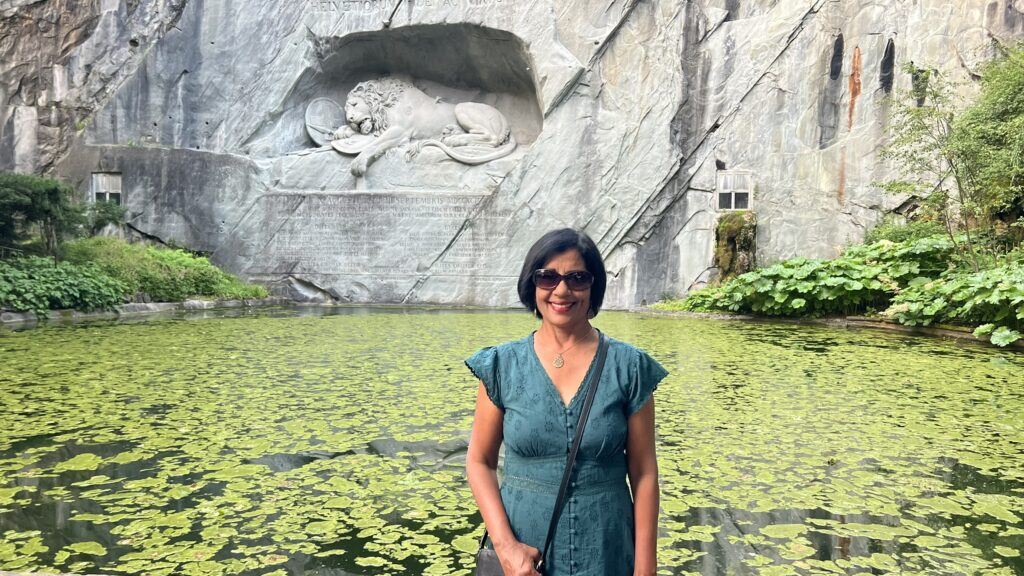
Church of St. Leodegar – also known as Hofkirche, this Roman Catholic church was built on the site of the 8th century Benedictine monastery of St. Leodegar which burnt down in 1633. The only parts of the original structure that survived were the two towers; everything else had to be rebuilt from scratch. Despite this setback, construction began almost immediately in 1633 and completed by 1645 – just twelve years later. The current building is a combination of Italian Renaissance style while incorporating elements of Gothic architecture from its predecessor creating a unique blend.
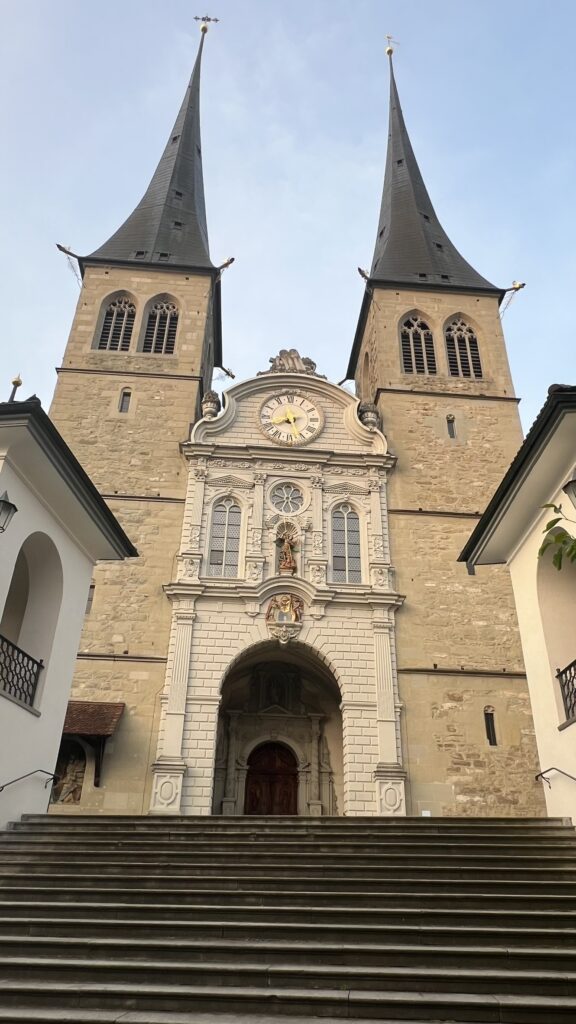
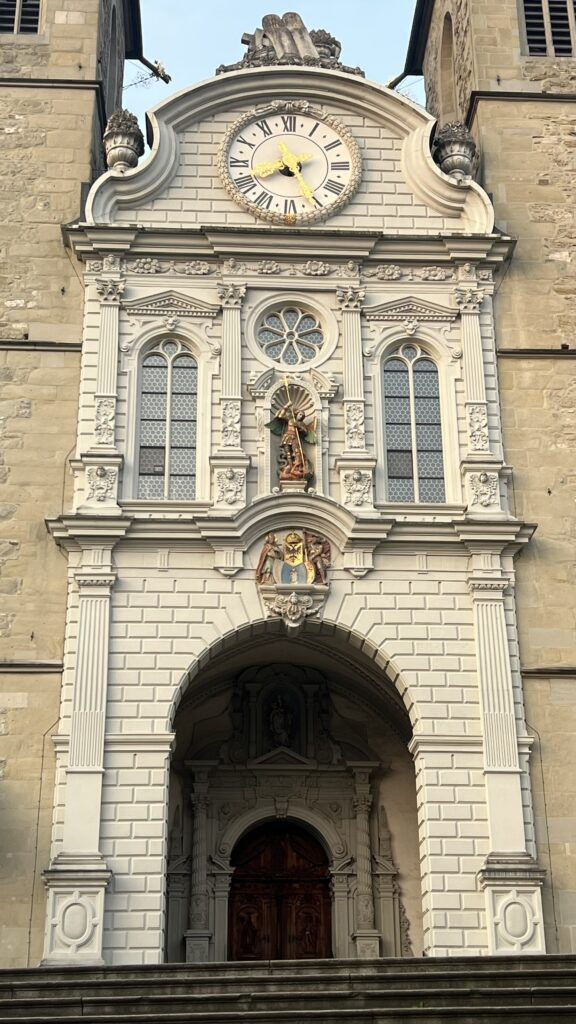
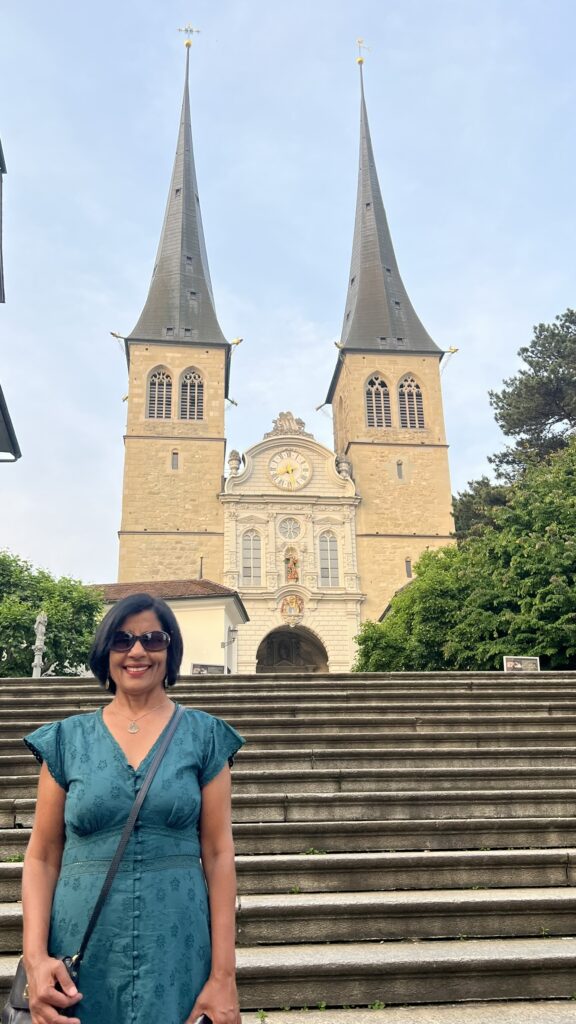
The church is open daily from 10am-6pm and free to visit. Much of what you see inside Hofkirche dates back only as far as its reconstruction period between 1633-1645 when it was crafted into an exquisite example of Swiss Baroque architecture. It has an impressive organ with over 5000 pipes installed for music concerts.
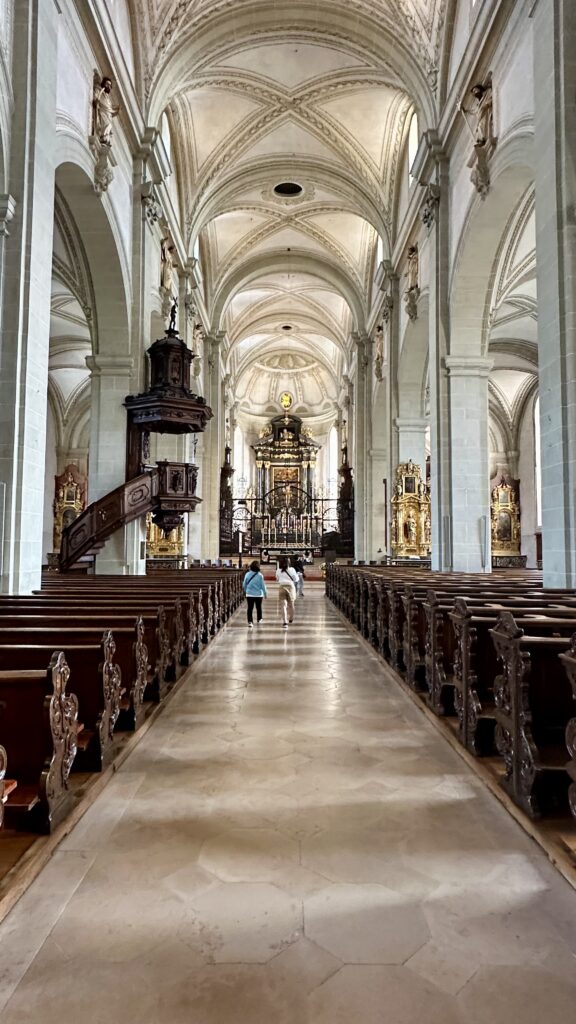
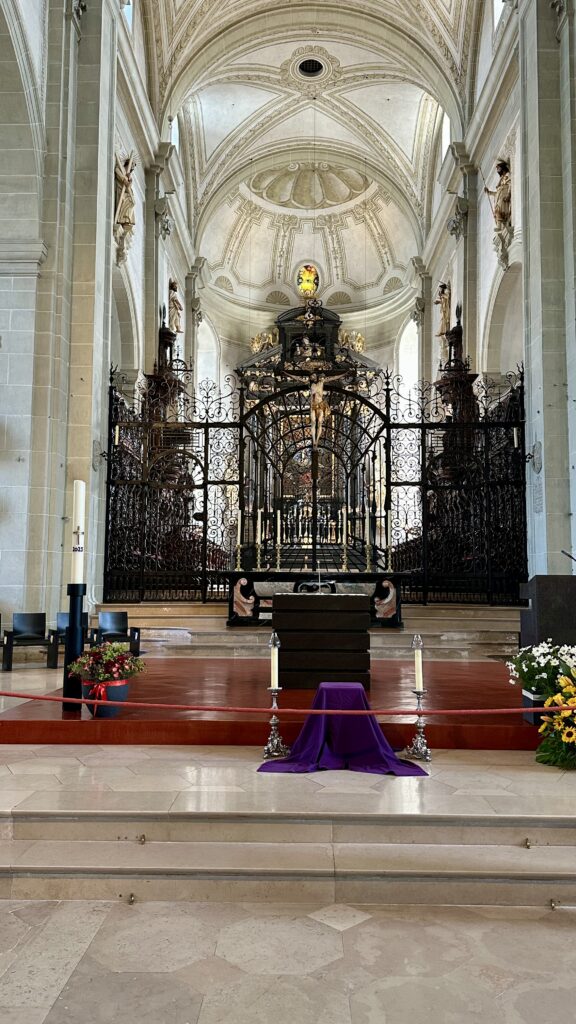
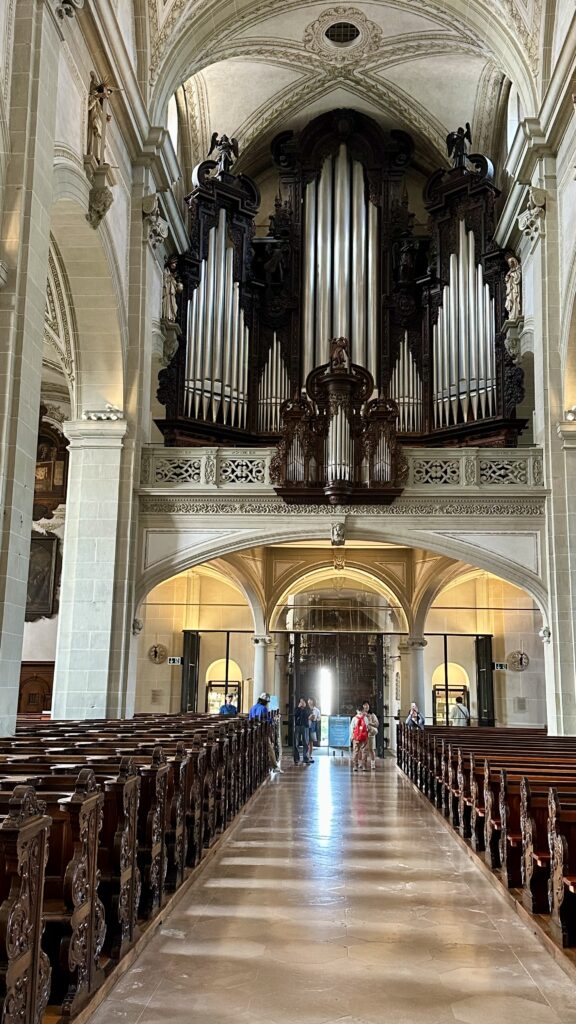
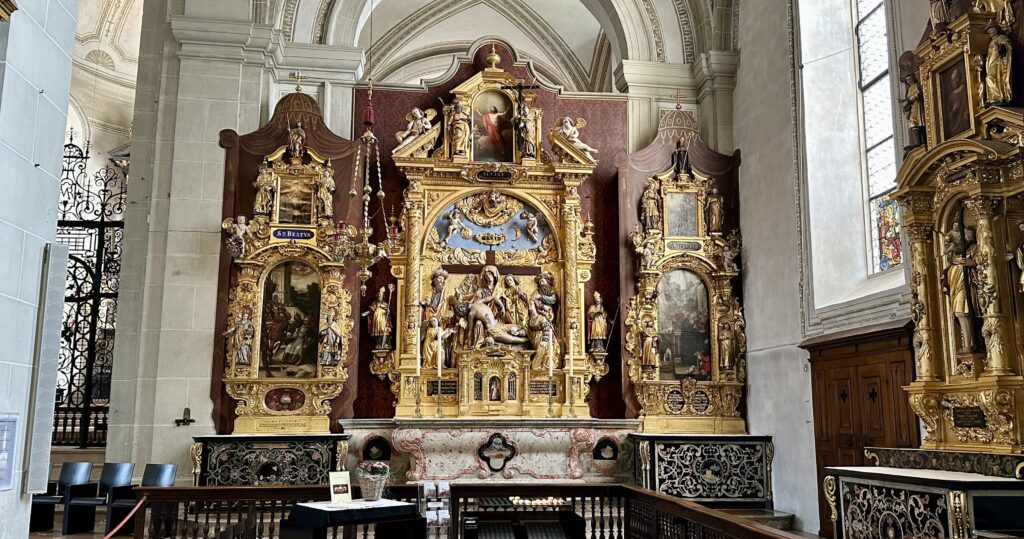
Kurplatz Lucerne – A 5-min walk from Hofkirche leads you to Lucerne’s waterfront. Kurplatz Lucerne, also known as Promenade Luzern, is scenic lakeside promenade featuring a music pavilion and is a popular spot for leisurely walks, enjoying views of Lake Lucerne and the surrounding Alps, and attending public concerts held in the pavilion during the summer.
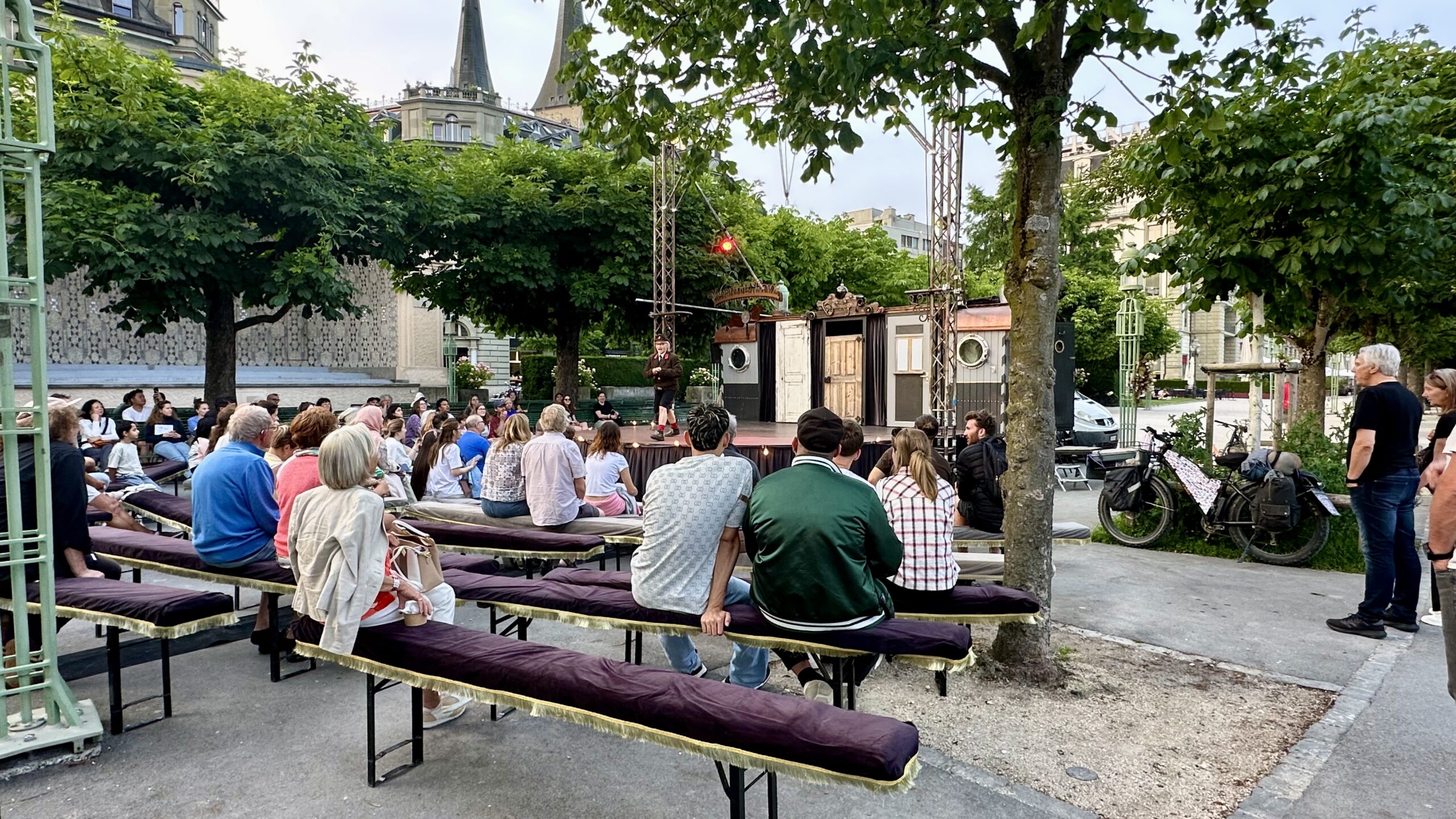

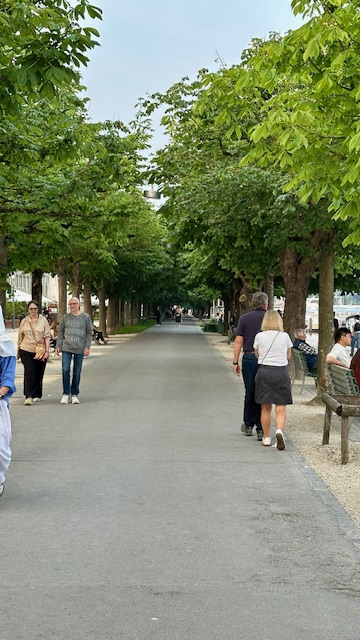
Kapellbrücke (Chapel Bridge) – Lucerne is well-known for its wooden bridges. A short walk from Promenade Luzern will take you to the most photographed sight in Lucerne – the Kapellbrücke, a covered wooden bridge running diagonally across from the new town on the southern bank of the Reuss to the Rathausquai in the medieval Old Town, zigzagging as it passes the impressive Water Tower. The bridge, considered to be Europe’s oldest covered bridge, was built in 1332 and was originally a part of the city fortifications. The pictorial panels, which were incorporated in the 17th century, contain scenes of Swiss history as well as the Lucerne’s history, including the biographies of the city’s patron saints, St. Leodegar and St. Maurice.
Lucerne’s water tower is a powerful and attractive construction. This octagonal tower – over 34 meters high (111.5 ft.) – was built around 1300 as part of the city wall and used as an archive, treasury, prison and torture chamber. Today, the middle floor is home to the headquarters of the Lucerne Artillery Association. The Kapellbrücke was severely damaged by fire in 1993, but has been completely rebuilt and restored.
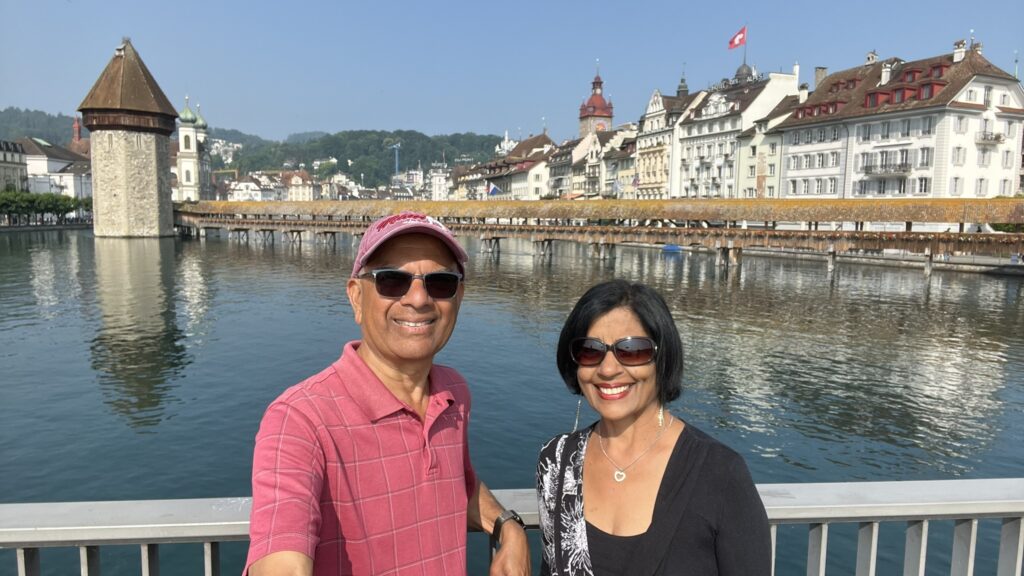
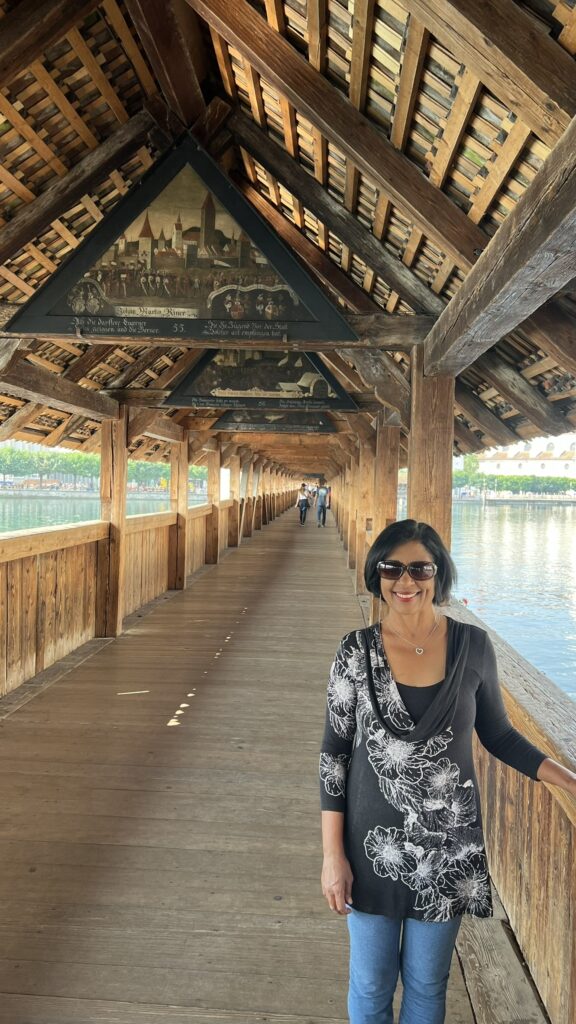
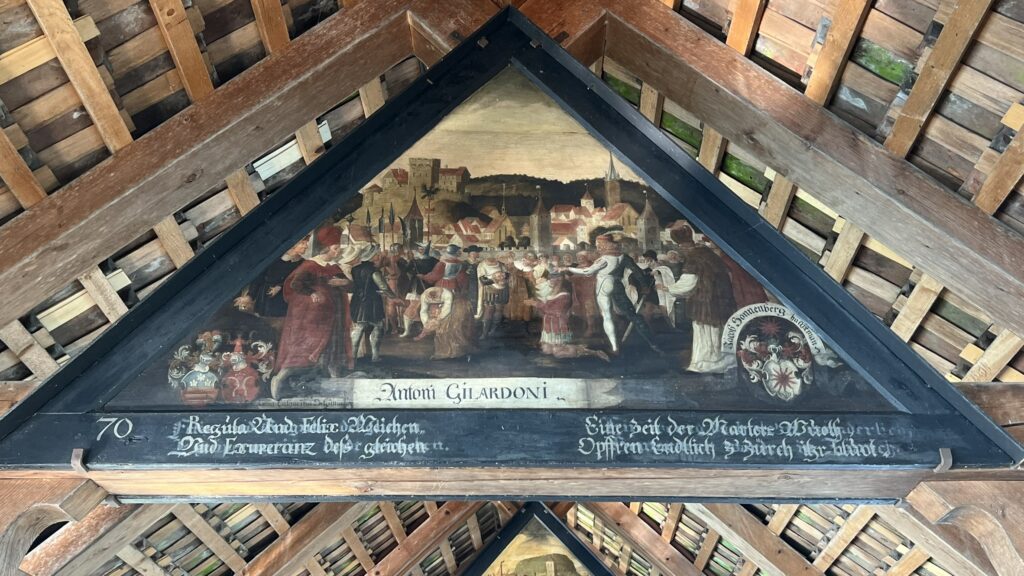
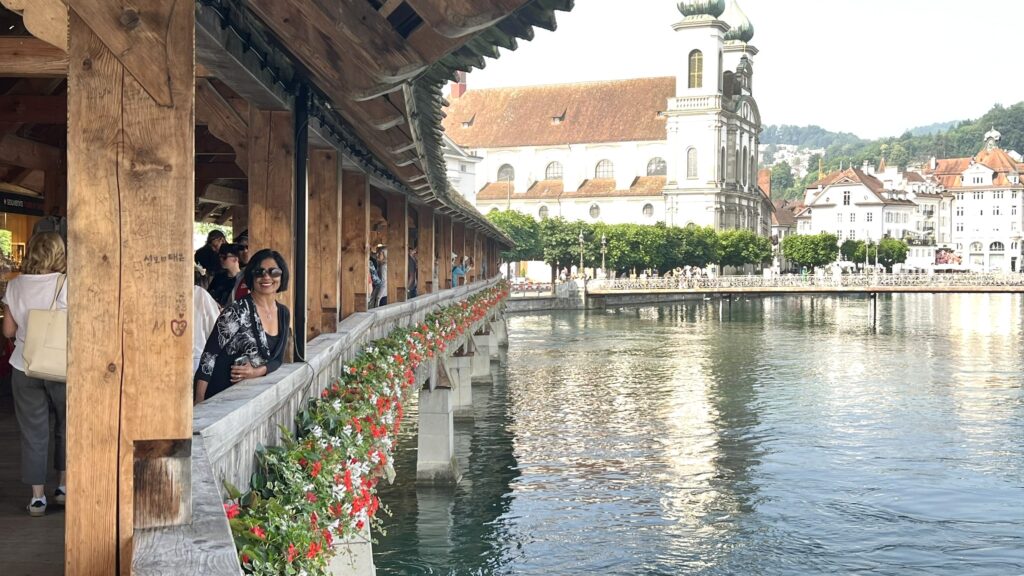
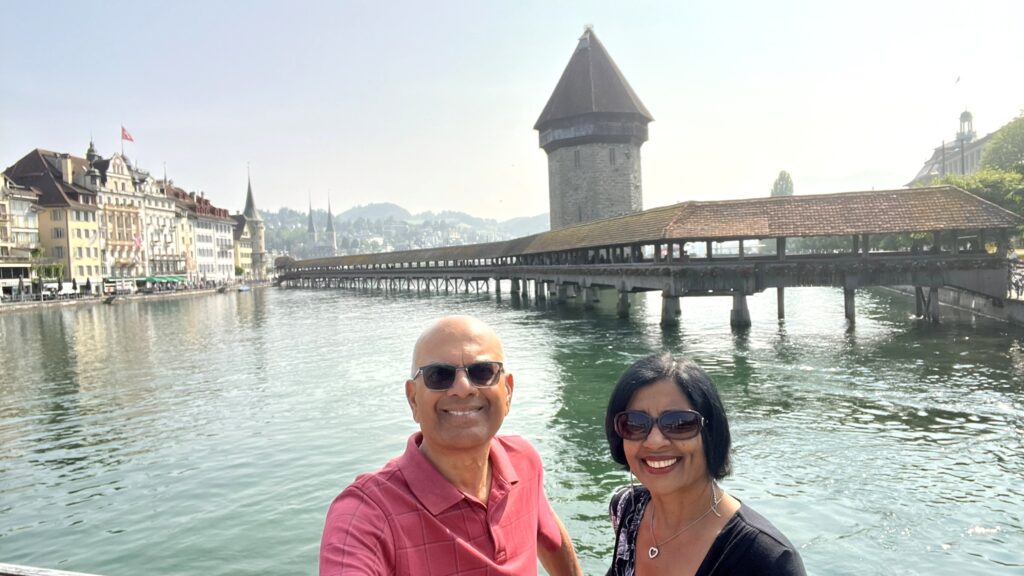
Jesuit Church – Switzerland’s first large church in the Baroque style built north of the Alps was founded for the Jesuits, who were invited by the city of Lucerne in 1573 to establish a college. The city hoped that the Jesuits, who were active in the Counter-Reformation, would help stave off the influence of the growing Protestantism. Construction on the associated church began in 1667 and was consecrated in 1677. The onion-domed towers were completed in 1893.
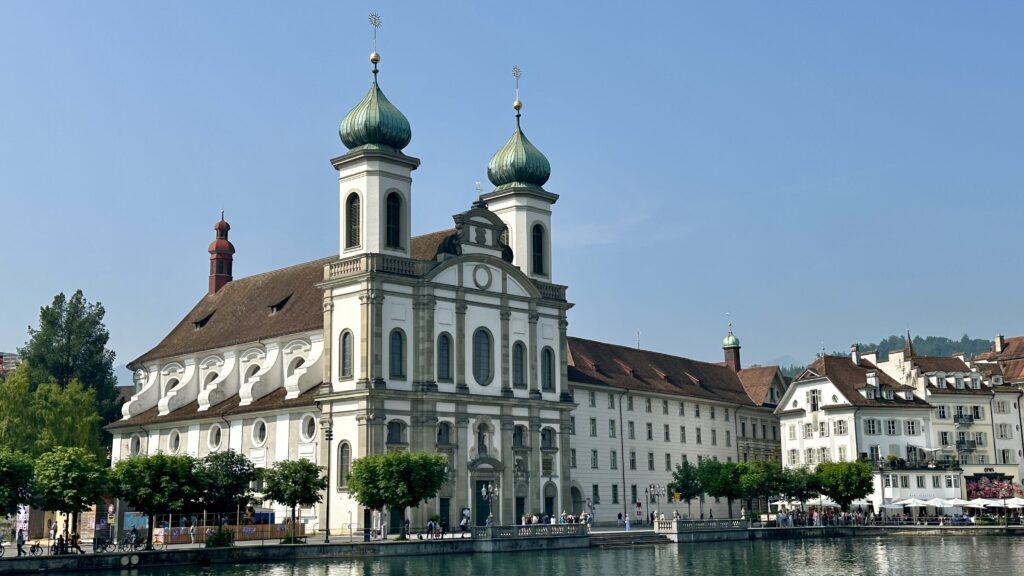
The interior was updated to the Rococo style in 1750, with an outstanding painted ceiling and ornate faux marble side altars.
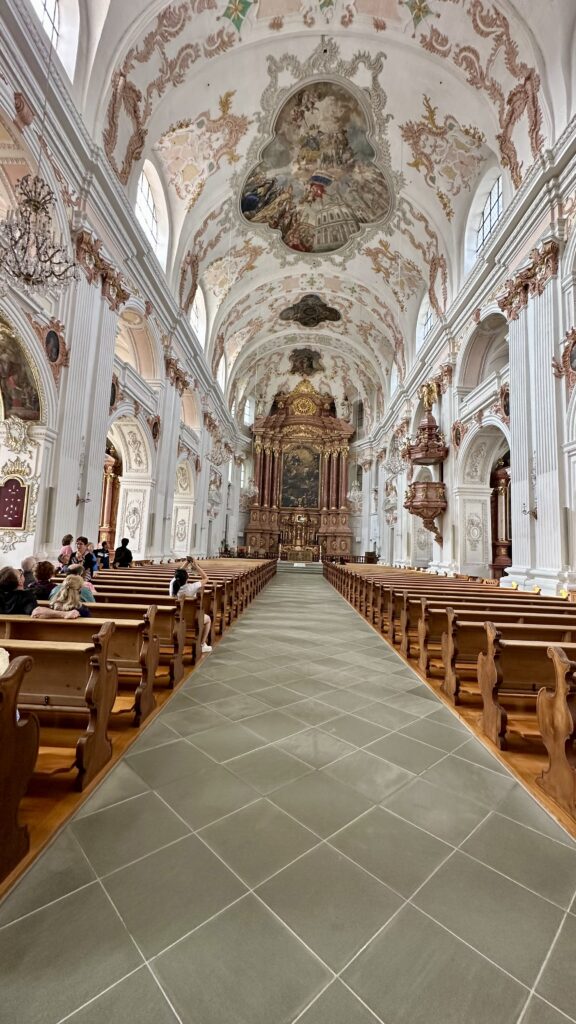
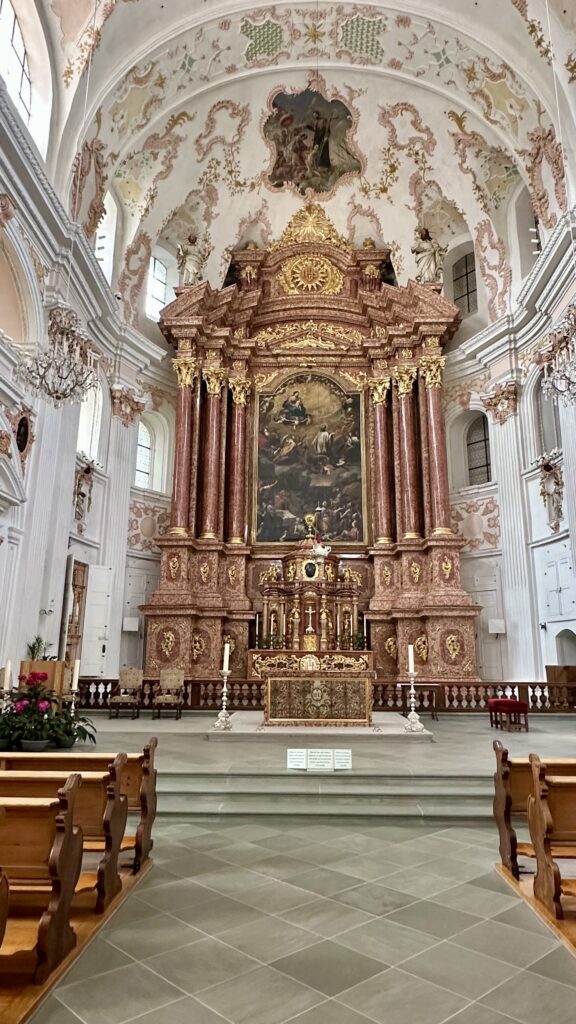
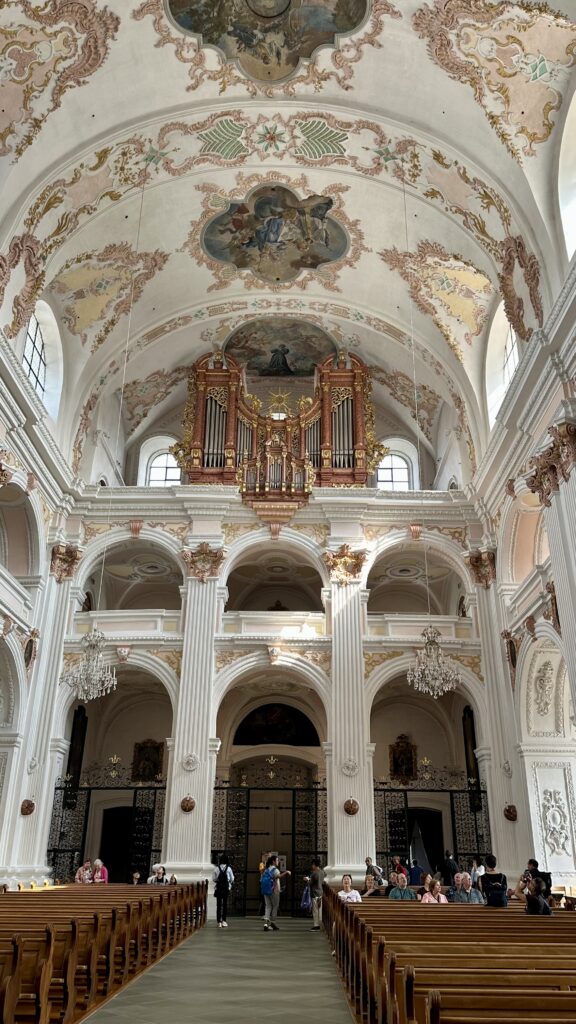
Franziskanerkirche – After visiting the stunning Jesuit church, we stopped at another church on the way to the 2nd covered bridge. This Franciscan church is over 800 years old. Much of the interior is made of wood and very artistically crafted.
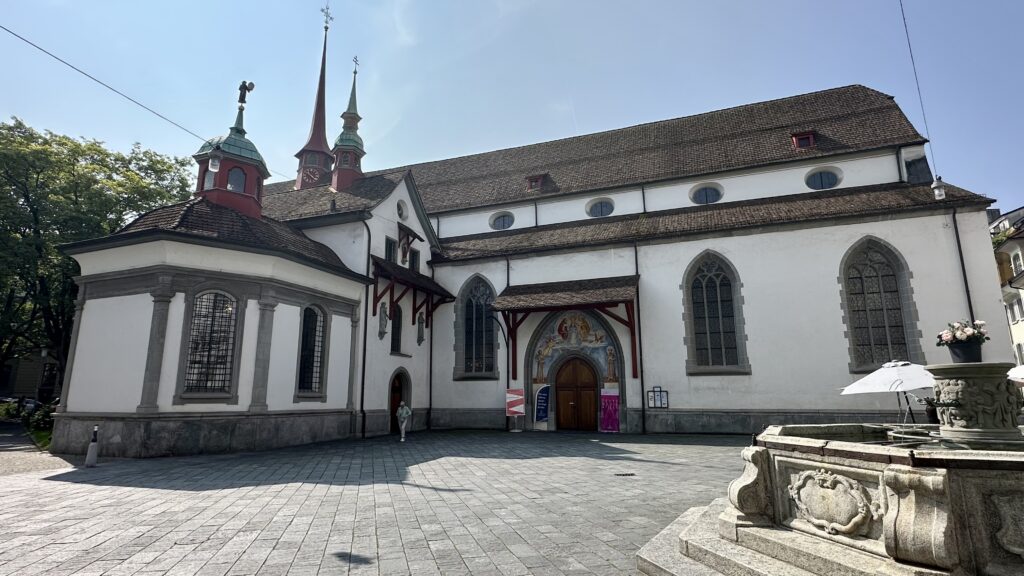
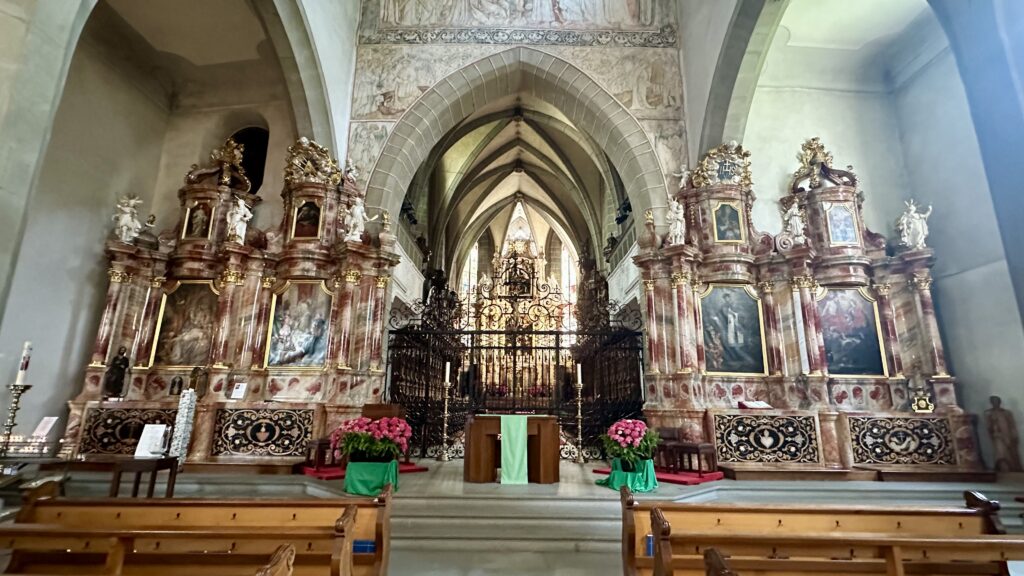
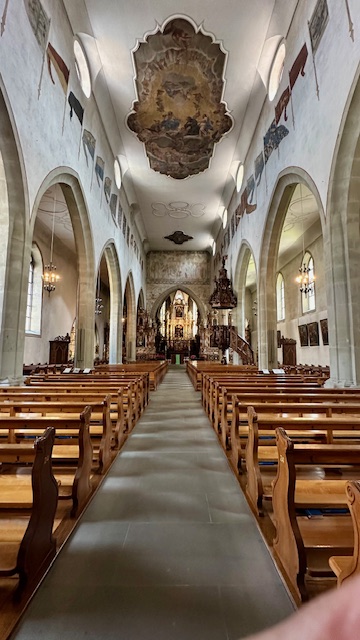
Spreuerbrücke – Lucerne’s second covered wooden bridge, the Spreuerbrücke, was built in 1406, and inside, on triangular panels under the bridge’s rafters, are 45 paintings of the Dance of Death, known in German as the Totentanz.
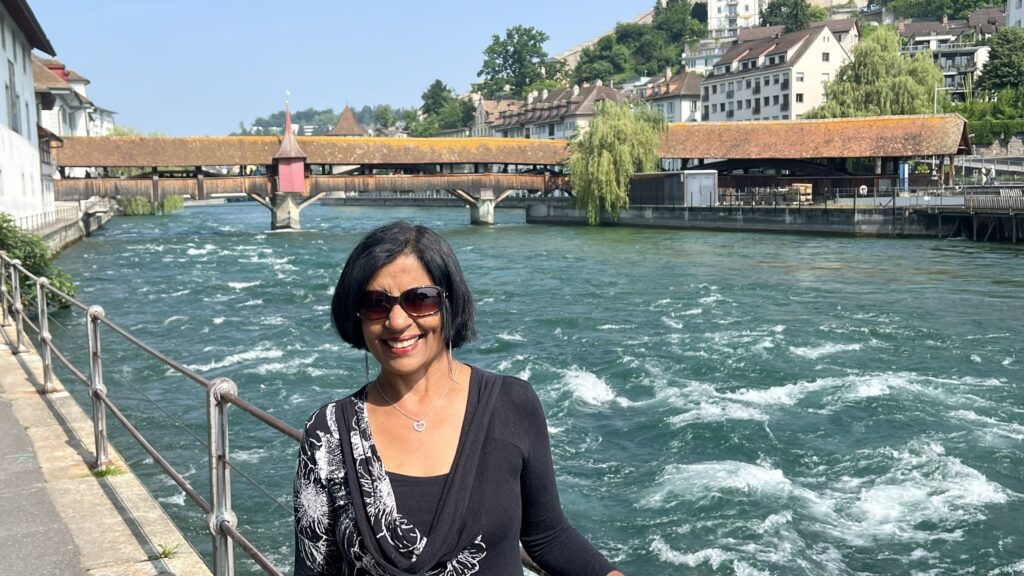
Painted between 1616 and 1637 by painter Kaspar Meglinger and his students, this is the largest example of a Totentanz cycle known to exist. These are framed in black, each frame inscribed with explanations in verse of the painting’s subject and the names of the patrons who donated them. Some also have portraits of the donors.
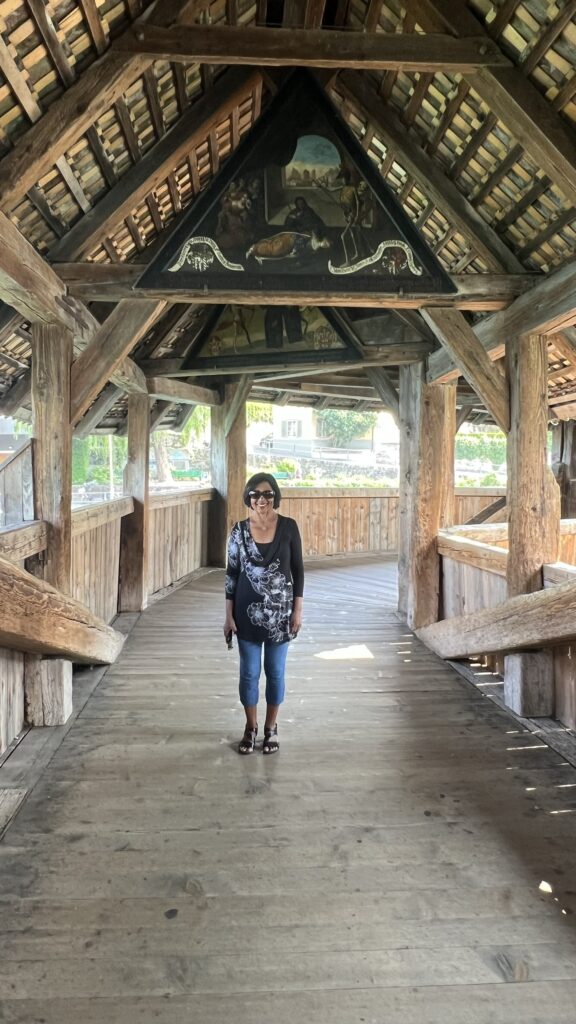
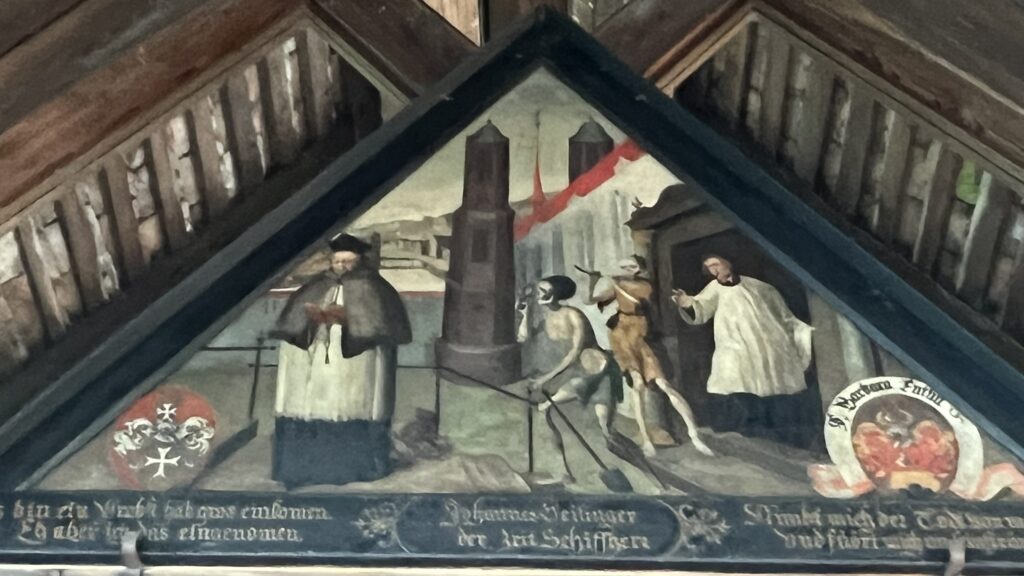
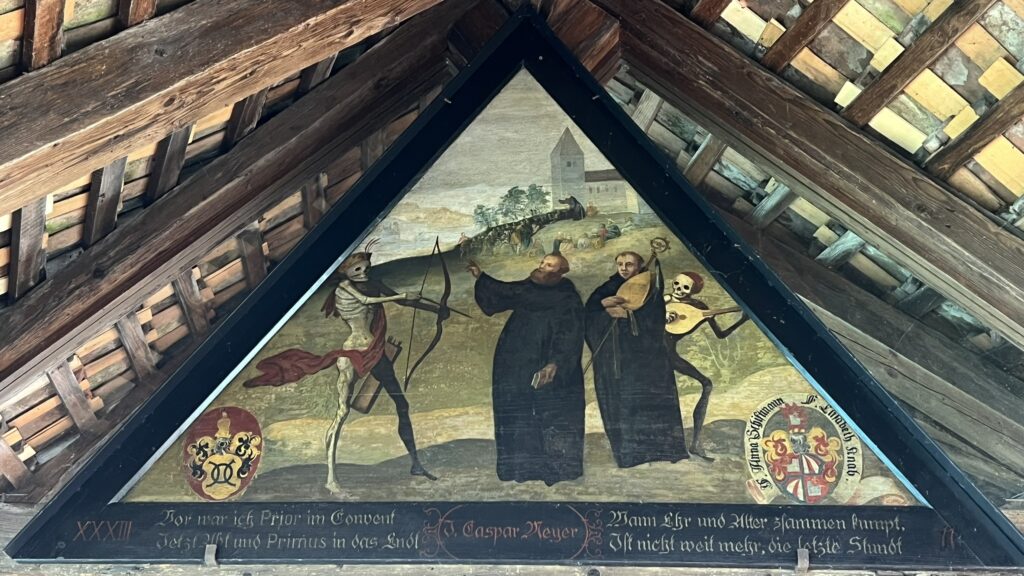
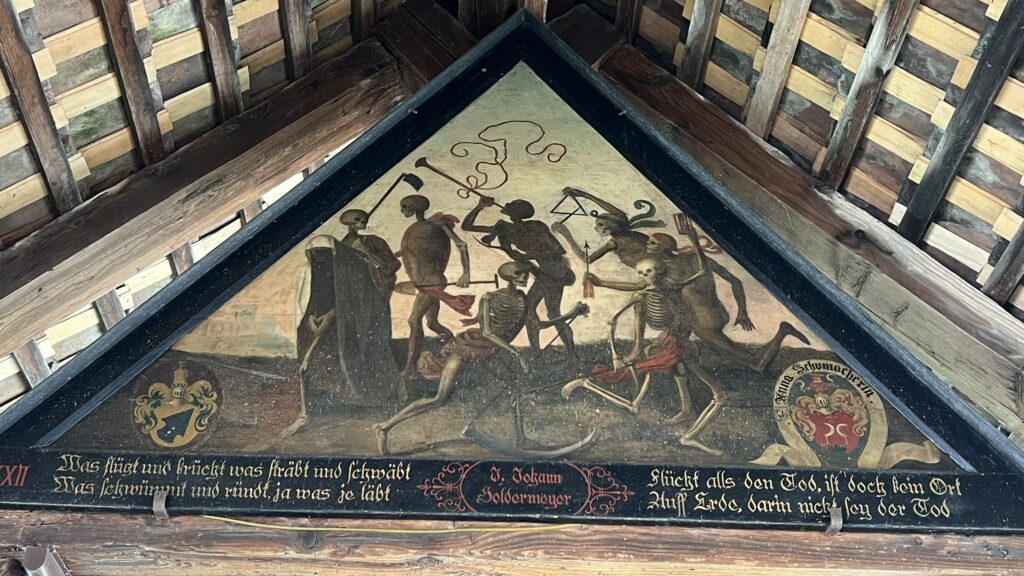
Lucerne’s Old Town – Lucerne’s old town boulevard lies between city hall and Chapel Bridge along the river Reuss. Numerous restaurants line the path along the river. Lucerne’s Renaissance style Town Hall, known as Rathaus, was built between 1602-1606 and is considered by many to be one of the most beautiful historical buildings in Lucerne. The town hall is free to visit.
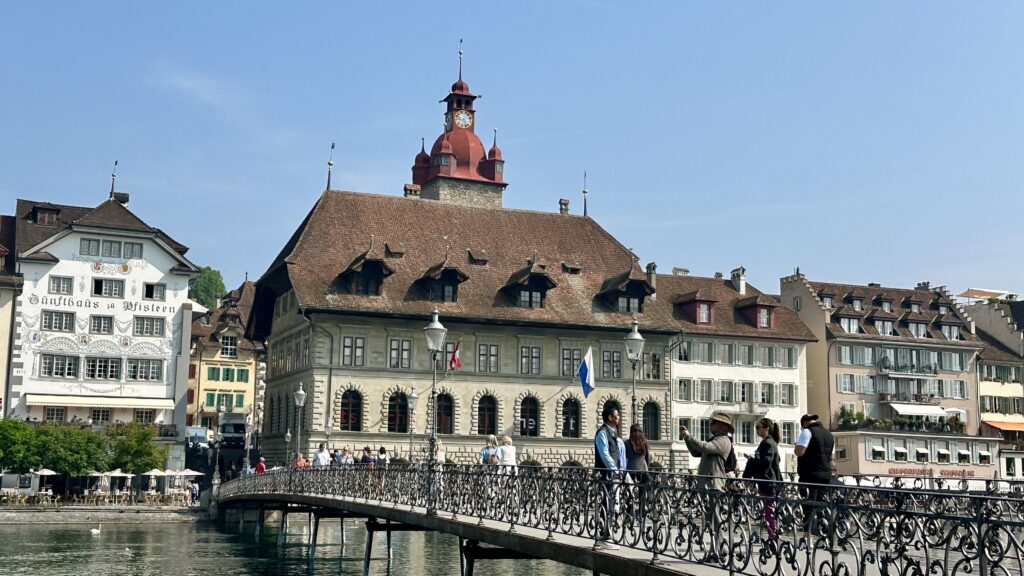
Lucerne’s town wall and towers – Along the north side of Lucerne’s old town is a wall built between 1350 and 1408, with nine towers constructed in differing styles. The part built around 1386 is still almost completely intact, and you can climb four of the towers – Schirmerturm, Zytturm, Wachtturm, and Männliturm – for views across the city, lake, and surrounding landscape. We walked along the walls and climbed all four towers. Plan on spending at least an hour for this activity.
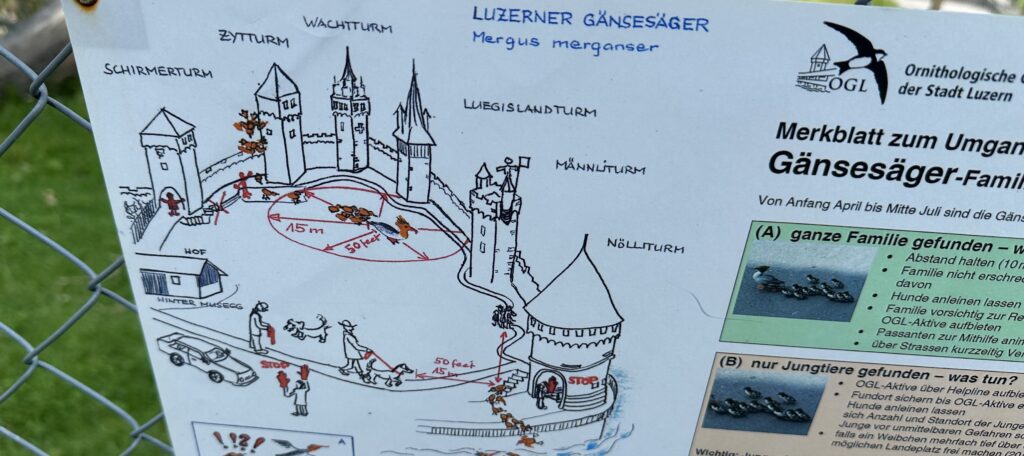
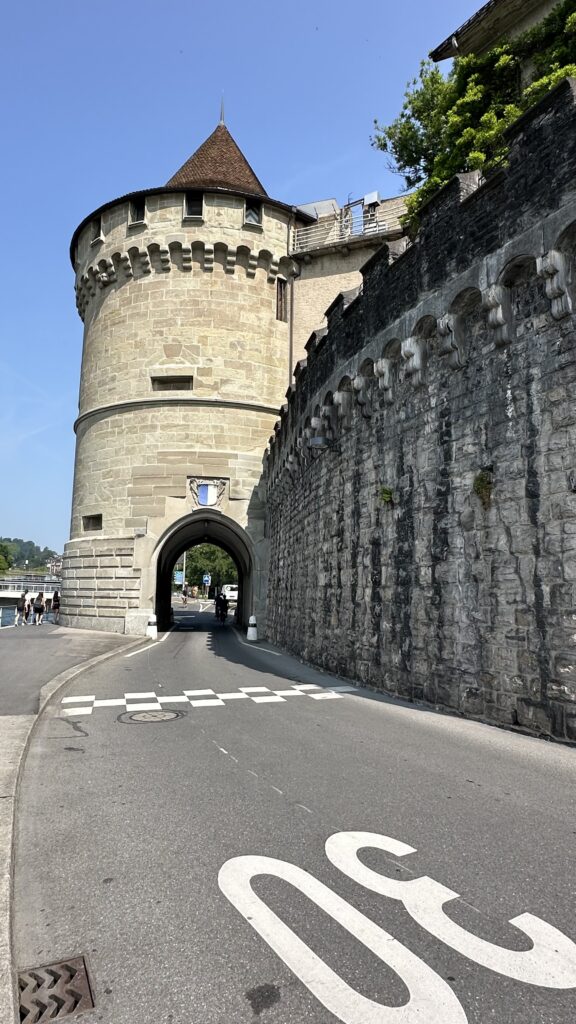
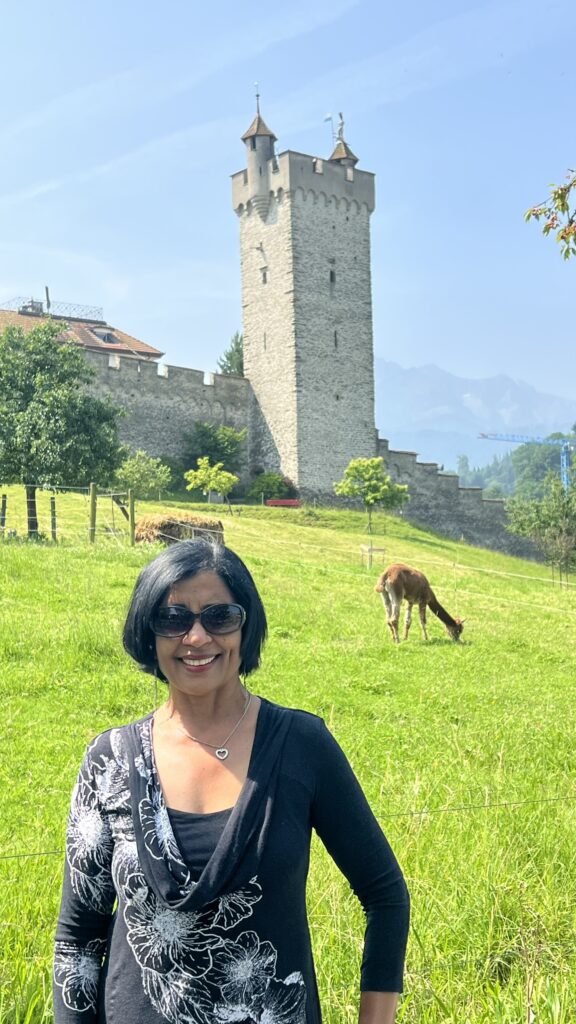
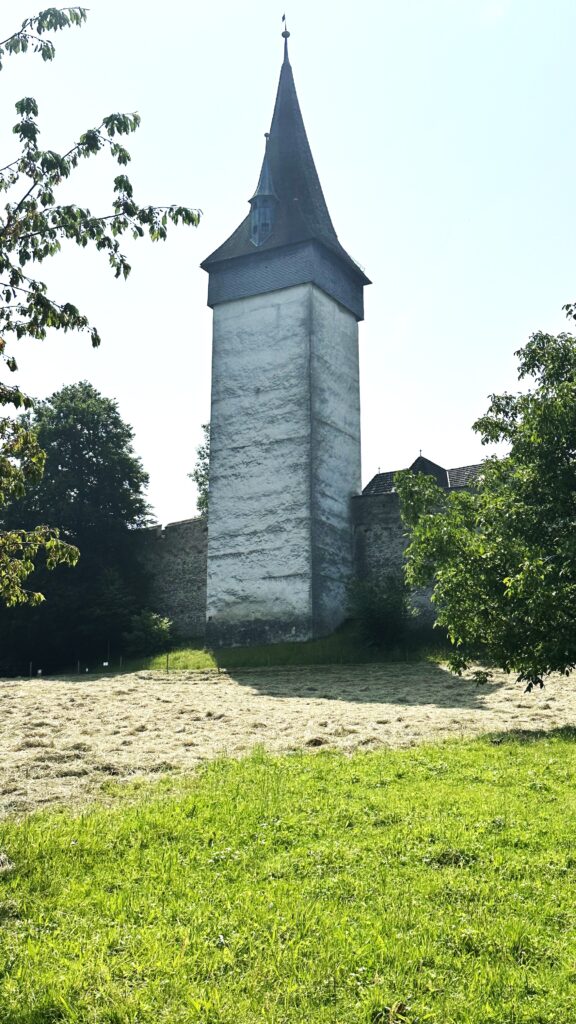
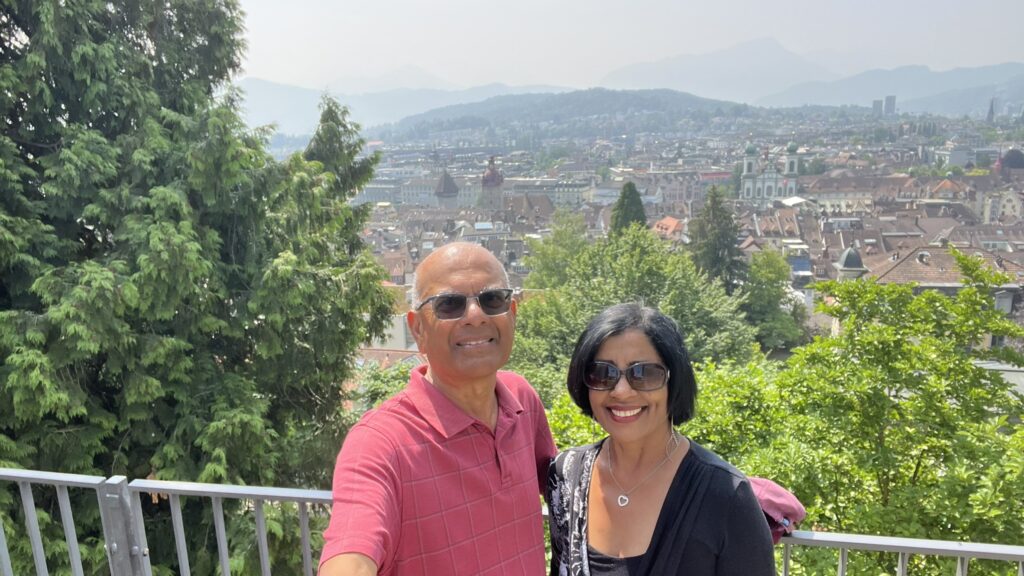
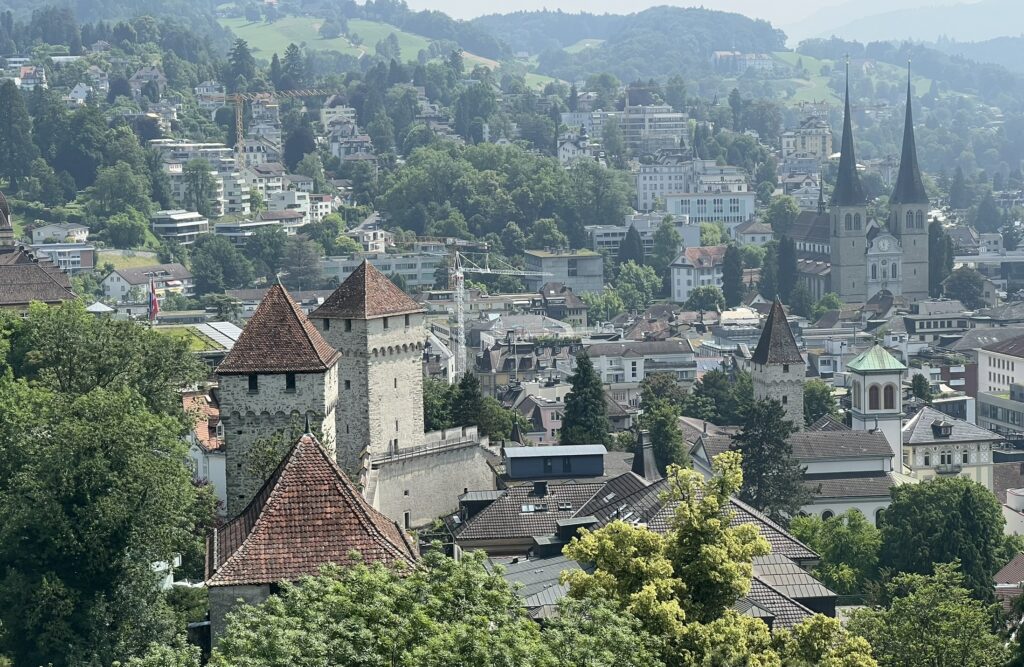
Cruising on Lake Lucerne – In the afternoon, we went on a cruise on Lake Lucerne. We got off at Vitznau and walked around the town.
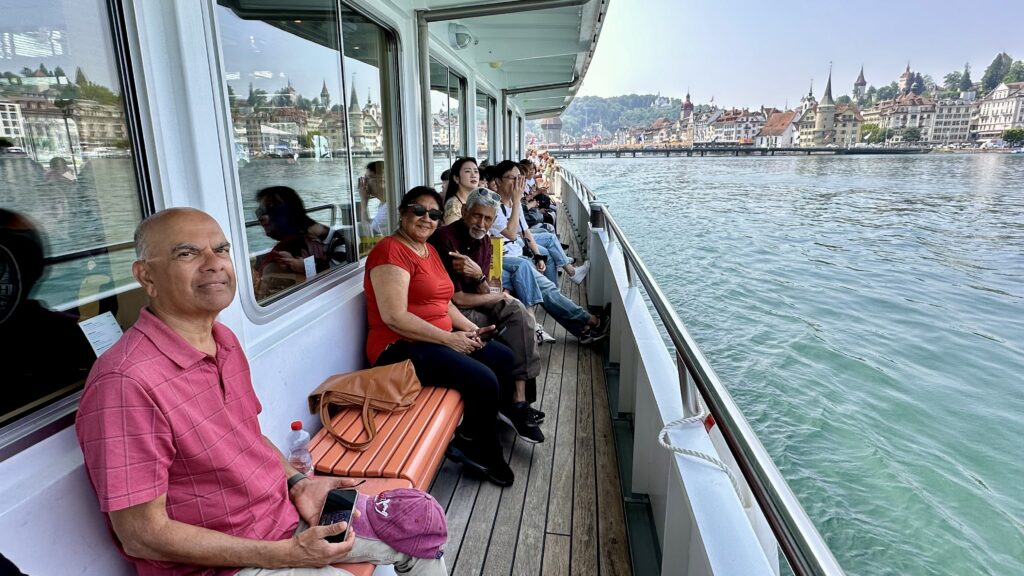
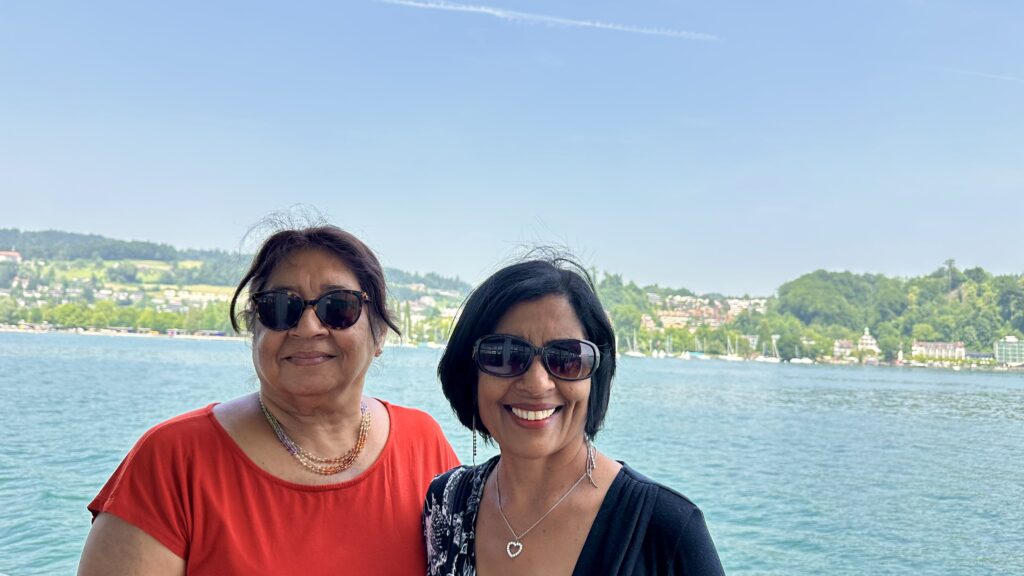
Cruising on Lake Lucerne, Vitznau – Vitznau is a charming village which is known as a starting point for excursions to Mount Rigi, often called the “Queen of the Mountains”. A cogwheel railway, the Vitznau-Rigi-railway, built in 1871, provides a scenic ascent to the summit of Rigi. The mountain offers stunning views, hiking trails, and winter sports, making it a popular destination.
As we walked around the small town there was a statue of Niklaus Riggenbach (1817–1899) who was a Swiss mechanic, railway engineer, politician and inventor of the cog railway or cogwheel railway (a steep grade railway with a toothed rack rail, usually between the running rails). Riggenbach launched Europe’s first ever cogwheel mountain railway on the route from Vitznau to Rigi Staffelhöhe.
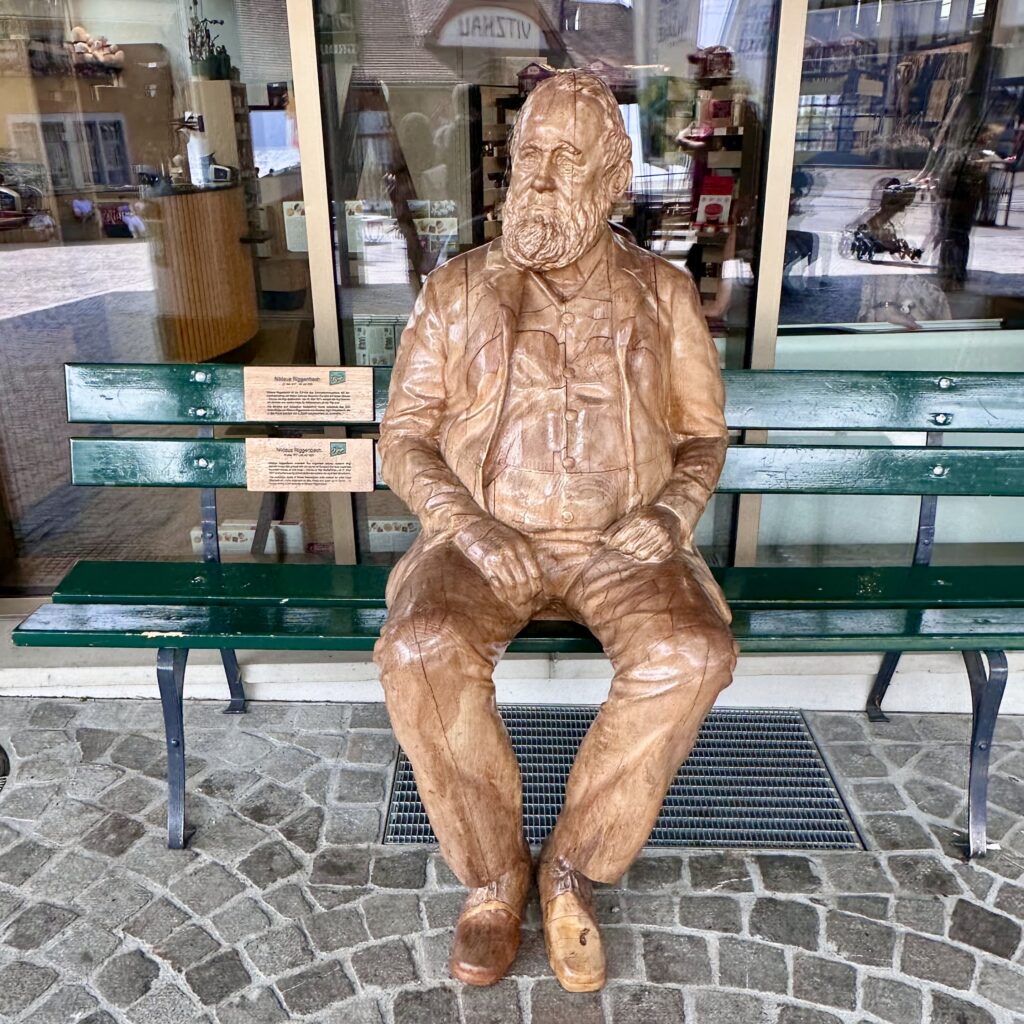
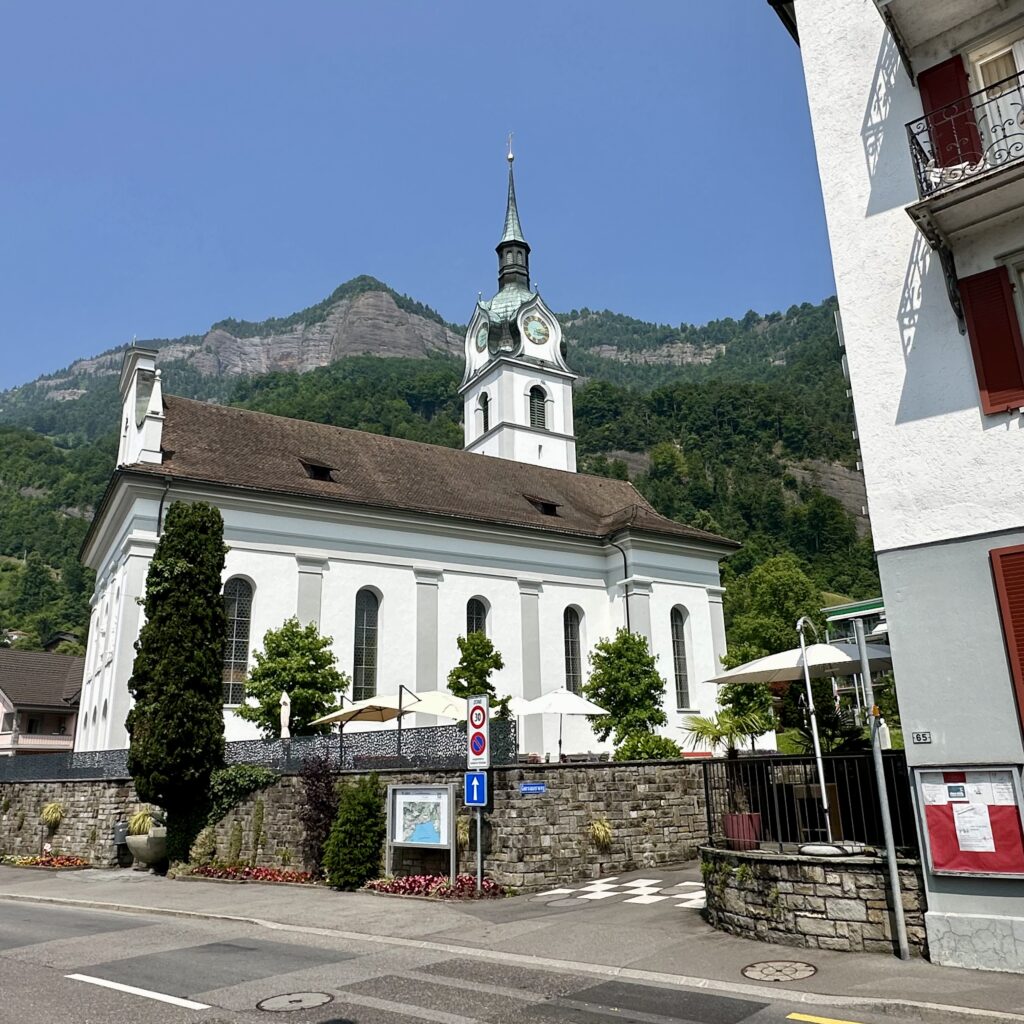
View of Lake Lucerne from Mt. Pilatus – We did not have time to visit Mt. Pilatus. It is worth a visit if you have aside 2-3 hours to spare, more if you decide to do some hiking at the top. Here are a few options to reach the summit –
- Take a boat to Alpnachstad to board the cog-railroad for a 30-minute ride at gradients up to 48 percent through Alpine meadows and forests, and through four tunnels to the upper station on Pilatus-Kulm. Runs from May – Nov
- From Kriens, you can take a panorama gondola to Fräkmüntegg. Then, a second cable car, known as the Dragon Ride, takes you to the summit, Pilatus Kulm. Runs year round
- Hike – There are several hiking trails up Mount Pilatus, including a medium-difficulty route from Ämsigen via Alpnachstad.
- Golden Round Trip – Go up using option 1 and come down using option 2